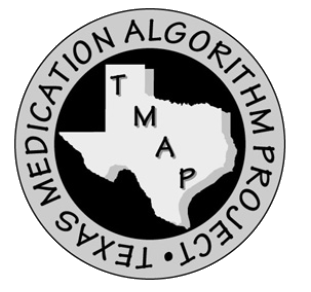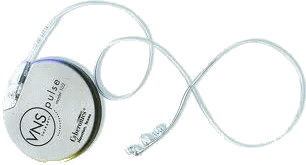 I keep making the mistake of calling the current trial in Texas The TMAP Trial. That’s not correct and I usually catch the error before I click Publish. I know why I do that. It’s a wish. I want it to be The TMAP Trial because there was so much more craziness in TMAP than just the Atypical Antipsychotic/Risperdal debacle. The piece that sticks out for me had to do with the VNS [Vagal Nerve Stimulator] which I call The Zapper, made by Cyberonics in Houston.
I keep making the mistake of calling the current trial in Texas The TMAP Trial. That’s not correct and I usually catch the error before I click Publish. I know why I do that. It’s a wish. I want it to be The TMAP Trial because there was so much more craziness in TMAP than just the Atypical Antipsychotic/Risperdal debacle. The piece that sticks out for me had to do with the VNS [Vagal Nerve Stimulator] which I call The Zapper, made by Cyberonics in Houston.
Some time before I retired in 2003, I had a patient who was sure that there was an antidepressant that would "fix" her depression. I’ll spare you the details, except to say that she had tried them all to no avail, and that she wanted a pill that would make her feel okay about a life situation that she hated but was afraid to approach directly – so we disagreed. She asked for a "pharmacology consultation," so I sent her to an old friend, a researcher who was still on the faculty at Emory and had been the most informed [sensible] psychopharm person I knew. She returned saying he’d tried to recruit her into a study on The Zapper. She declined [sensibly]. That was the first I’d heard of such a thing [and my last such referral]. The notion that someone wanted to hook this woman up to a Vagal Nerve Stimulator to make her feel better about a life situation she hated was something I just couldn’t get my mind around.
 So I retired at the end of 2003 and involved myself in matters non-psychiatric. In 2006, I heard that Emory’s Chairman, Dr. Charlie Nemeroff, had to step down as editor of Neuropsychopharmacology because of an undeclared conflict of interest. No surprise – but I guess I wasn’t ready to think about psychiatry yet, so time passed. I only later learned that it was over a ghost-written review of The Zapper [racketeer influenced and corrupt organizations…].
So I retired at the end of 2003 and involved myself in matters non-psychiatric. In 2006, I heard that Emory’s Chairman, Dr. Charlie Nemeroff, had to step down as editor of Neuropsychopharmacology because of an undeclared conflict of interest. No surprise – but I guess I wasn’t ready to think about psychiatry yet, so time passed. I only later learned that it was over a ghost-written review of The Zapper [racketeer influenced and corrupt organizations…].
After Senator Grassley exposed Charlie Nemeroff’s extensive problems with conflicts of interest and he was "stepped down" as chairman of the department at Emory in 2008, I started looking into recent psychiatric history with increasing interest [mouth agape] and began to realize the level of misbehavior. I began to blog about such things. Reading through all the conflict of interest declarations that seemed to end every article, I kept seeing Cyberonics. It was everywhere. I thought they must have more people on the payroll than Google, and I finally connected Cyberonics with The Zapper. Arggh!
Drug firms paid ‘independent’ experts
Practice led to AG-whistleblower lawsuit
AUSTIN [KXAN]
by Nanci Wilson
July 25, 2011… In 2008, the TMAP guideline for major depression was revised. The first non-medication treatment was added. The Vagal Nerve Stimulator, or VNS, manufactured by Cyberonics, is a medical device that is surgically implanted and sends electrical impulses to the brain. The studies provided to the FDA during the approval process were conducted by several of the members of the TMAP team, including John Rush of the University of Texas Southwestern Medical Center in Dallas. Reviewers with the FDA found the evidence submitted to the FDA to be lacking. They recommended against approval. However, their decision was overruled and the device was approved.
The reviewers sounded an alarm, and the U.S. Senate Finance Committee launched an investigation into the approval process. Its findings raised questions about how the device could be approved by the FDA absent the scientific data showing the product was safe and effective. In a speech on the floor of the Senate about the investigative report, U.S. Senator Charles Grassley said the conclusions of the person overruling the decision raise serious questions. He read from the override memo, “I think it needs to be stated clearly and unambiguously that [certain VNS data] failed to reach, or even come close to reaching, statistical significance with respect from its primary endpoint. I think that one has to conclude that, based on [that] data, either the device has no effect, or, if it does have an effect, that in order to measure that effect a longer period of follow-up is required.” The FDA approved the VNS with the condition that the company would conduct further studies and report the results to the FDA.
The Centers for Medicare/Medicaid refused to pay the estimated $25,000 bill for VNS treatment for depression. Most insurance companies wouldn’t pay, either. But that didn’t deter the TMAP team from including the VNS on the revised guideline for treating depression. Such decisions were made behind closed doors and records revealing which members approved the inclusion are not available. Rush’s relationship with Cyberonics was not fully disclosed to the University of Texas in his annual Statement of Financial Interest filing. His filing dated Aug. 7, 2006, lists his role as a member Cyberonics Speakers Bureau with an annual income equal or less than $10,000. But in records submitted to the office of U.S. Sen. Charles Grassley, R-Iowa, by Cyberonics, Rush was paid $100,000 in 2006 by the maker of the VNS. Cyberonics also reported paying Rush more than $75,000 in 2003 and 2004, and $62,000 in 2005.
Of the 10 decision makers who worked on the revision to the TMAP guideline for depression, six reported they owned stock or had a financial relationship with Cyberonics, including the project director, Crismon. Such disclosures were made to their employers or though industry publications. The UT School of Pharmacy reported Cyberonics was the source of funding for a $54,938 research project in which Crismon was the principal investigator. In a news release by Cyberonics, the company said the purpose of funding the research was to use the data to convince Medicaid and insurance companies to pay for VNS. “By demonstrating the cost-effectiveness of VNS Therapy for treatment resistant depression [TRD] through this standardized, extensive and thorough analytical approach," the release said, "it is our expectation that many more payers will come to recognize and understand the unique safety, effectiveness and cost effectiveness of VNS Therapy and grant psychiatrists and Americans with TRD access to VNS Therapy through national and regional coverage policies.”
Several TMAP panel members wrote letters urging the Centers for Medicaid to reconsider and pay for VNS treatment for depression. Cyberonics cited it’s inclusion in the revised TMAP guideline for depression as reason for the government to pay. It didn’t work. CMS ruled the evidence did not show the treatment was effective for treating depression. A year after the ruling, the revised TMAP guideline was published recommending VNS, although many patients in the states hospitals and community centers would have had to pay out-of-pocket for the treatment…
DBS in the news w a researcher w ties to the ‘zapper’ from Emory http://bipolarsoupkitchen-stephany.blogspot.com/2012/01/deep-brain-stimulation-for-depression.html
Opening statements J&J trial http://www.washingtonpost.com/business/industries/opening-statements-set-in-texas-lawsuit-seeking-1-billion-from-jandj-over-anti-psychotic-drug/2012/01/10/gIQAfmGSnP_story.html